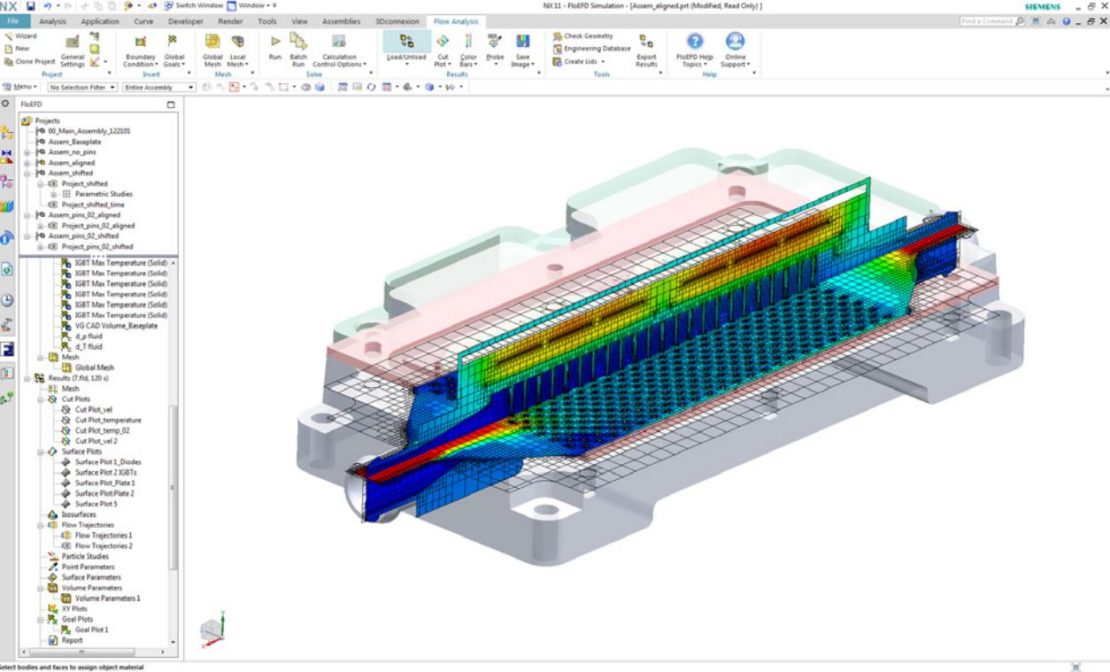Even high-powered computers cannot directly solve the flow equations of a turbulent flow for practical industrial applications. It is, therefore, necessary to simplify the governing equations. Different turbulence models can be used for the averaging of the nonstationary turbulent oscillations; the CFD-tools have different turbulence models and simplifications, especially for the velocity profile near the walls.
Large
Eddy Simulation
The LES is the direct numerical solving of the full stationary
Navier-Stokes equations. It requires extremely high CPU resources and it is mostly used for
the aerodynamics of planes and cars
k-ε Turbulence model
Combined with the logarithmical wall law is the standard approximation. It
allows to calculate with a coarse mesh; however, it systematically
underestimates the heat transfer
SST k-ω, Low-Reynolds turbulence model
The shear stress transport (SST) formulation is more accurate than the
standard models regarding speed profiles close to walls, heat transfer and
recirculation, it requires a very fine high-quality hexahedral mesh close to
the walls. For complex geometries the meshing set-up is tedious and the
calculation time is long.
FloEFD, developed by Mentor Graphics, a Siemens PLM Business, combines a CAD
Software, a Cartesian mesh generator with solver and visualisation capabilities. Thanks to the integration in the CAD system and the bypass of the
mesh generation, it is possible for draughtsmen and engineers to start-up very fast simple calculations.
FloEFD can work with a bad quality CAD, for example when two parts collide with each other.
The mesh is interpolated to the surfaces through automatic generated cut
cells; the imprecision of the interpolation decreases rapidly as the number of
cells is increased. FloEFD offers the k-ε turbulence model with wall functions derived from the
profile of Van Driest. For this approximation, the boundary layer region close
to the wall is either handled as a thin or as a thick boundary layer. The Van
Dreist profile is a reliable way to approximate the boundary layer, with which
the ventilation and cooling can be very well calcualted.
FloEFD for Solid Edge is embedded in the CAD program Solid Edge. FloEFD is also available with CATIA.v5, Siemens NX, Solidworks, Autodesk Inventor, Pro / ENGINEER Wildfire or Creo. All of these CAD tools work perfectly with FloEFD. The user can work in the company's CAD system. The flow calculation engineer has to familiarize himself with the CAD tool, but today it is still a must for a trained mechanical engineer to master a CAD system. In comparison, the learning of special geometry preparation tools such as Salome, Ansa, Ansys Design Modeler or Space Claim is supplementary work, because these are used exclusively in connection with certain simulation software. The common CAD tools work with three-dimensional parts that are arranged in assemblies. The special geometry preparation tools work with surfaces. Therefore, the transition from one CAD tool to another is much easier than from a geometry preparation tool to a CAD tool.

Automatic generation of a cartesian mesh in FloEFD for Siemens NX
CFX, Fluent and STAR-CCM® are well known commercial software. They are comprehensive, can be used for most applications and offer several turbulence models. The geometry-fitted mesh generation is the most time-consuming operation of the whole process.